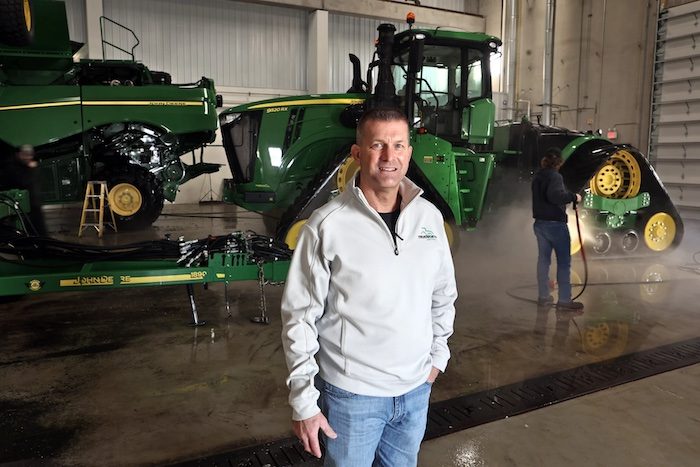Since John Deere revealed its new autonomous tractor earlier this year, farm and non-farm analysts alike have pondered what the future holds for farm equipment autonomy.
John Deere’s pitch is simple: the world’s population is expanding, and farmers need to match it in supplying food. That puts a premium on new precision farming technology, which lets farmers squeeze extra efficiencies out of fixed labor and land.
John Oncken is the CEO and owner of True North Equipment, a John Deere dealer straddling the border of Minnesota and North Dakota. He argues that anyone working in agriculture has the same workforce shortages as other sectors, even maybe more so. That makes it the perfect time for farmers to make the leap into something new.
“We’ll see them this fall," Oncken says, "and I think into 2023, it’s going to be those that see the value of it and aren’t scared of that next step in technology who are going to be the ones that innovate into that space quicker. It has the potential to shift the way ag production is done today.”
Mark Watne is the president of the North Dakota Farmers Union. He absolutely thinks you’ll see autonomous tractors in the field soon.
“I really do think they’re for real,” Watne says. “You’re going to see them in a little smaller setting, in the sense that they’re not going to be an extremely large tractor that’s not pulling a 60-foot air drill, but they’ll be a small tractor that can run 24 hours a day and do a specific job.”
The introduction of Deere's autonomous 8R comes as workforce shortages roiling the country find their way to agriculture. In October, American Crystal Sugar’s beet harvest had to press through a shortage of truck drivers and plant workers. A senior official for trucking company Transystems said at the time that they were so short on drivers that they couldn’t meet customer demand.
On the farm itself, labor shortages could get worse. The Bureau of Labor Statistics estimates that the agricultural labor sector will show “little or no change” between 2020 and 2030, possibly backsliding by about 1%. Average growth rate across other sectors is about 8%.
“The core challenge we have, especially in Northern Plains agriculture, we have really seasonal labor needs,” says Frayne Olson, an agricultural economist with North Dakota State University.
The short growing season isn’t the real pinch, he argues, but it’s the spike in labor needs at planting and harvesting, combined with a lack of a well-trained labor pool to help staff the big, expensive machines that make it work. Not just anybody can show up to the farm and help, he says.
“You jump in today’s tractors, today’s combine, and you look at the instrument panel and say, ‘this is like a spacecraft,” he says.
This is the kind of conversation that’s been going on for years at Grand Farm, the farm tech research site near Fargo. Brian Carroll, Grand Farm’s director, imagines a future with more than just autonomous tractors. One of the site’s current projects explores how to track produce from seed to consumer. Blockchain, the same ledger technology behind cryptocurrencies, is one way to help get it done.
“Why that’s important is by connecting the grower to the consumer, consumer behavior can start to drive and monetize different behaviors,” he says. “A good example is if you look at some soybeans, there are markets that are out there that will pay a premium if it knows where the soybean is being processed, how it’s being handled and what quality it is, what the protein level is as well. The only way that you’re able to pass that on to the grower is through traceability.”
This is all part of the farm of the future. But it’s not here just yet, and it’ll take some buy-in from farmers to make it happen.



![[Technology Corner] Discussing AI’s Potential Impact on Service & Support](https://www.precisionfarmingdealer.com/ext/resources/2025/04/11/Discussing-AIs-Potential-Impact-on-Service--Support.png?height=290&t=1744385717&width=400)


